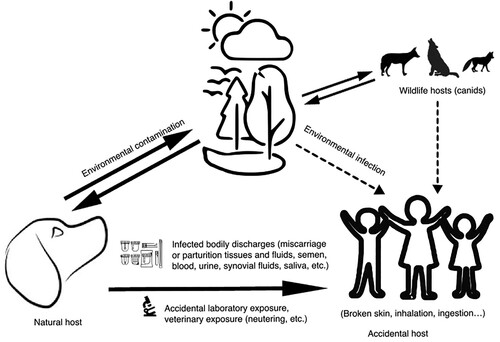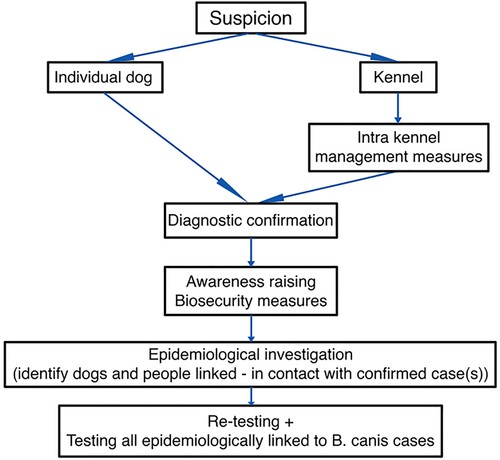Figures & data
Table 1. European incidents of Brucella canis infection that have been identified (note many cases may go unidentified or unreported).
Table 2. Summary of available indirect serologic tests and their properties.
Table 3. Detectability results by platform using the European Union Dog Brucellosis Standard Serum (EUDBSS).
Figure 1. Currently known B. canis transmission routes for human infections. It has been proven that humans can be infected by B. canis through direct contact with bodily discharges of infected dogs, their bodily discharges or through accidental laboratory exposure. Other possible sources of infection could be contact with wild canids. In the same time, the survival of B. canis in the environment has not been tested (although it has been shown that other members of the Brucella genus can survive in the environment for up to eight months under favourable conditions), and this cannot be excluded as possible source for human infection. Proven sources of human infection are linked by full line arrows, while possible sources are presented by dotted line arrows.

Table 4. Guidelines on determining the dogs’ status regarding the B. canis infection.
Figure 2. Overview of the diagnostic management scheme evaluated in this study for B. canis infection in individual dog and/or kennel. In the case of a confirmed B. canis infection in individual dog or kennel, the following workflow aims to provide proper bio-risk and public health management. After all biosecurity measures have been put in place to avoid the spread of infection, a detailed epidemiological investigation must be carried out to identify exposed persons, animals or facilities with which need to be surveyed.

Table 5. Recommendations on B. canis risks mitigations in kennels.
